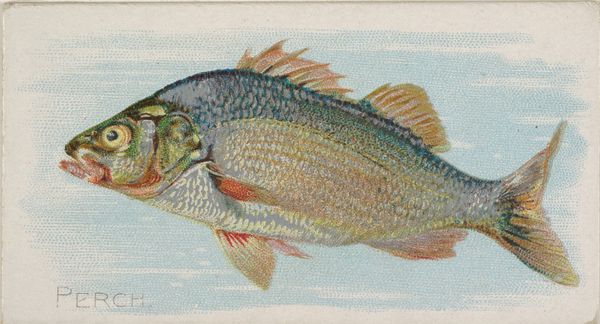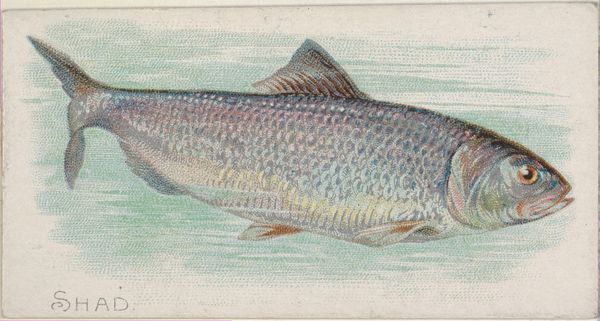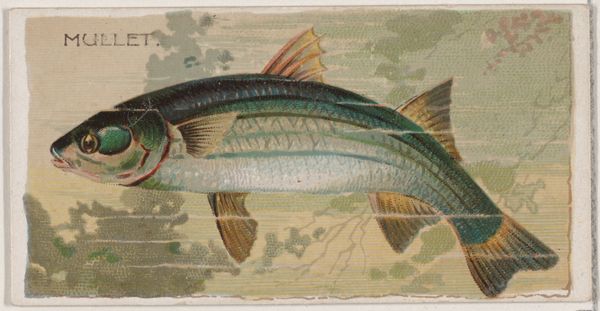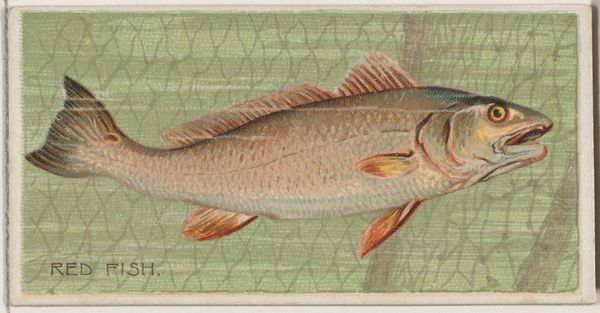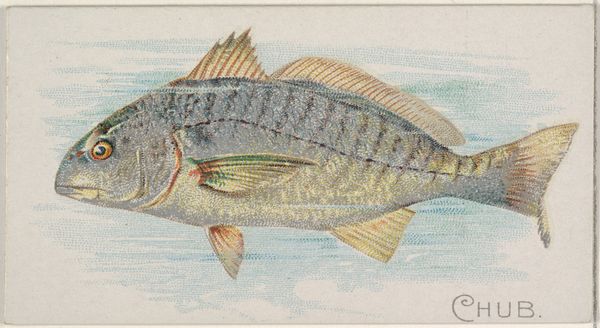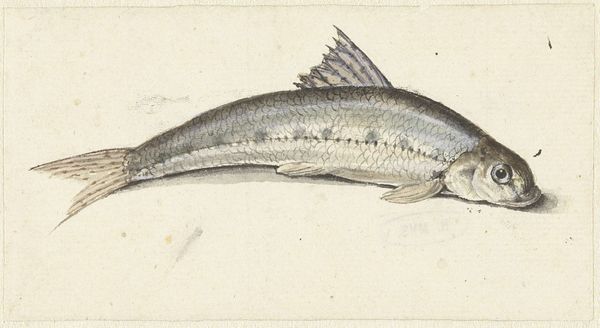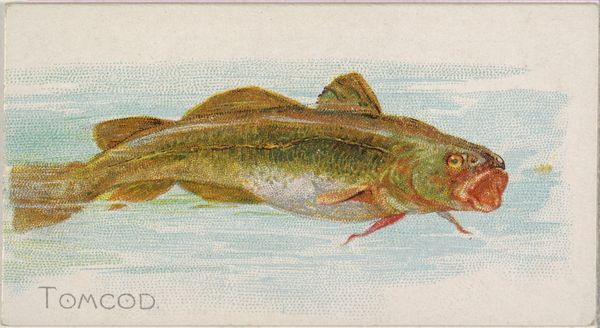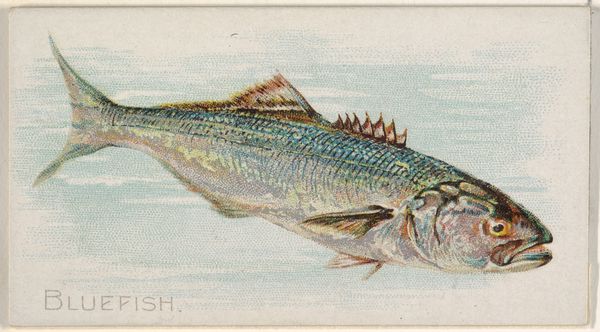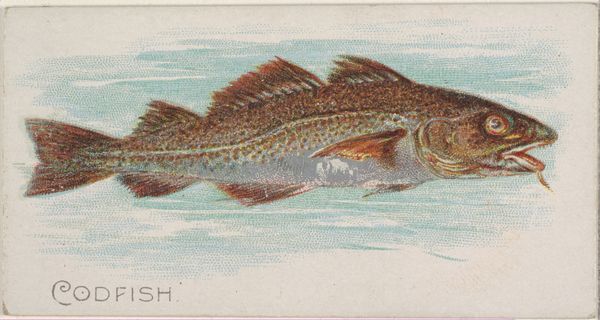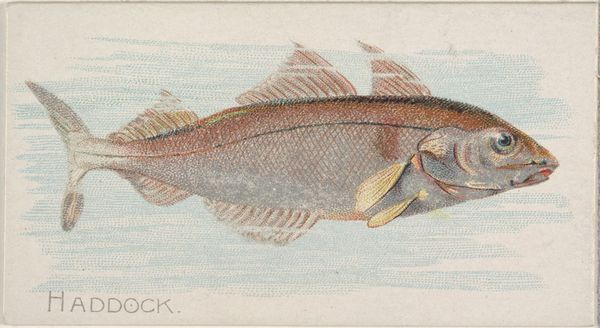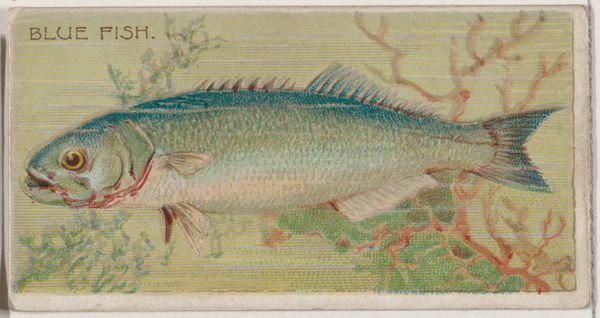
Mullet, from the Fish from American Waters series (N8) for Allen & Ginter Cigarettes Brands 1889
0:00
0:00
Dimensions: Sheet: 1 1/2 x 2 3/4 in. (3.8 x 7 cm)
Copyright: Public Domain
Curator: I’m immediately drawn to how…flat it feels. The composition has a strangely graphic quality. It feels less like a naturalistic depiction of a fish and more like a symbolic representation. Editor: Indeed. Here we have "Mullet," a colored-pencil print from the series "Fish from American Waters" created around 1889 by Allen & Ginter. It’s a piece that initially appeared as one in a set of collectible trading cards designed to be included in cigarette packs. Curator: Cigarette cards, how fascinating. And to choose a humble mullet as a subject? What statement is being made about popular taste, about the value of the commonplace? Was this meant to elevate the mundane? Editor: It’s about commerce and culture. Cigarette companies like Allen & Ginter used these cards as incentives to attract customers, employing vivid imagery—animals, sports figures, actresses. Consider the ways such seemingly innocent cards served as propaganda tools, embedding particular values, consumer habits and notions of progress. This little fish is swimming in a much larger historical current, don't you think? Curator: It also raises questions about authenticity and reproduction. What does it mean to capture something as organic and alive as a fish in a medium designed for mass consumption? This fish isn't merely represented; it is made an emblem, a symbolic token. I wonder what other cultural significations the mullet might have had in the collective imagination. Is it a symbol of abundance? A trickster figure? A harbinger of changing times? Editor: Exactly! And for whom? By fixing an image of a "mullet" in the cultural imagination in the late 19th century, Allen and Ginter perhaps codified American aquatic diversity or set other industrial and consumerist dynamics in motion. The trading card subtly promotes both a visual and ecological perception that is also undeniably capitalist. Curator: Well, I think this closer look reveals something beyond a pretty picture. The object is seemingly innocent on the surface. But it has a deeper symbolic layer in a network of intertwined cultural associations. It reminds me that all images are carriers of ideology. Editor: Agreed. The interplay between commerce, aesthetics, and environmental impact here urges us to think critically about how our perceptions are actively shaped, and sometimes limited, by systems of production and power.
Comments
No comments
Be the first to comment and join the conversation on the ultimate creative platform.
